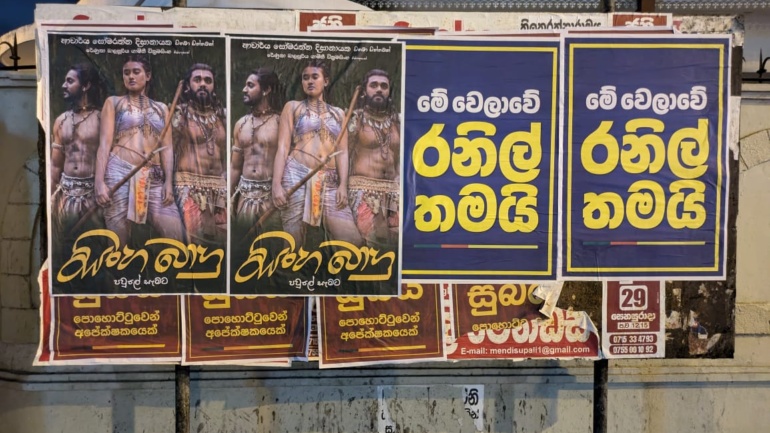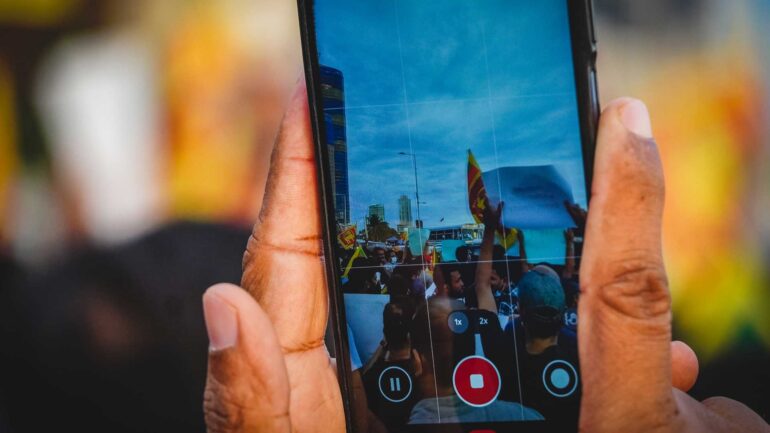This year’s ‘Siri Dalada Vandana’– which was considered a special exposition of the Sacred Tooth Relic at the Dalada Maligawa – took place for over 10 days, after a gap of 16 years, the last such exposition having been in 2009. It attracted large crowds, with over one million pilgrims and devotees coming to pay homage to the Sacred Tooth Relic.
The relic is normally kept hidden inside the Temple of the Tooth and its public exposition is a rare event, traditionally held every five years. One of the primary reasons for its infrequent occurrence is the importance placed on ensuring the safety and sanctity of the relic, which is regarded as the most sacred object in Sri Lankan Buddhism.
The most recent exposition was approved by the Chief Prelates (Mahanayaka Theras) of the Malwatte and Asgiriya Chapters following a personal visit from President Anura Kumara Dissanayake. His direct engagement with the monastic leadership not only facilitated the event but also illustrates how senior Buddhist clergy continue to serve as gatekeepers of political legitimacy. Amidst it all, given that religion and politics are deeply intertwined in Sri Lanka, the political dimensions of the Dalada exposition warrant closer examination.
Relics as performative embodiments of the nation
In Sri Lanka, the Tooth Relic of the Buddha functions as a sacred object and a performative centre of political, spiritual, and national identity. As a primary relic, it is believed to hold the virtues and spiritual power of the Buddha (Carol, 2016), making it a ‘thing’ in the Heideggerian and Ingoldian sense – a convergence of meanings and forces. The ‘Siri Dalada Vandana’ ritualistically sacralises Kandy, transforming it into a spiritual epicentre, amplified by media as a site of reverence (Tomlinson and Zhu, p. 1).
The body politics of the relic is vital; rulers who associate with it symbolically align with the Buddha’s sanctity, gaining moral and religious legitimacy. Since its arrival in the 4th century CE, the relic has legitimised Sinhalese kingship, with control over it equating to rightful rule (Geiger, 1960; Paranavitana, 1960; and Seneviratne, 1977). During British colonialism, its protection was tied to national and spiritual continuity.
In post-independence Sri Lanka, this tradition persists. Newly elected leaders visit the Dalada Maligawa to cement their authority. Prime Minister J.R. Jayewardene’s 1977 inaugural speech was delivered from the temple’s ‘Paththirippuwa’ (octagon), symbolising the religion-State entanglement. The Kandy Esala Perahera enacts this sacred-political order annually (Frasch, 2008). The relic’s symbolic power lies in its selective accessibility.
In 2022, President Ranil Wickremesinghe’s request for an exposition was denied by a majority within the Malwatte-Asgiriya Karaka Sangha Sabha. Coming on the heels of the ‘Aragalaya’ protests that ousted President Gotabaya Rajapaksa, the refusal signalled a withdrawal of religious endorsement. Wickremesinghe’s ascent, widely criticised as a backroom deal with the Rajapaksas, lacked grassroots legitimacy and the denial further eroded his symbolic authority.
By contrast, in 2025, President Dissanayake’s personal visit secured approval, underscoring the continued role of the Buddhist monastic hierarchy in conferring political legitimacy. In Sri Lanka, where religion and politics are deeply intertwined, the performance of relic veneration is beyond the spiritual; it is a ritual enactment of nationhood, power, and authority.
As an extension, sacred spaces are contested and politicised terrains where, as Lily Kong (2009) suggests, they are shaped by complex dynamics of power, domination, subordination, and negotiation. They are produced and experienced in religious terms and in broader socio-political conflicts, often becoming battlegrounds for tensions between secular and religious authorities, or between ethnic and religious groups.
The Dalada Maligawa, as a national and religious symbol, has also been a target during times of social unrest. In the late 20th century, amid the civil war between the Sri Lankan State and the Liberation Tigers of Tamil Eelam (LTTE) in the north, and the second Janatha Vimukthi Peramuna (JVP) uprising in the south, the temple became a symbolic site of contestation. In 1989, the JVP launched an armed attack on the temple; almost a decade later, in 1998, the LTTE carried out a bombing that damaged parts of the temple complex. The attacks not only targeted a sacred site but struck at the heart of Sinhalese Buddhist identity and national heritage as well. In the aftermath, reconstructing the Dalada Maligawa became a matter of urgency, not only to restore a sacred space but also to reassert national integrity and religious continuity (Wijesuriya, 2005, p. 90).
These episodes underscore how violence can unmake the sacred, disrupting not only physical spaces but also the symbolic and affective ties that bind communities. They also reveal how sacred spaces, far from being isolated from political life, are deeply embedded in the project of nation-building and equally vulnerable to its discontents.
Variants of Sinhalese Buddhist nationalism
The 2025 Dalada exposition is even more significant against the backdrop of Sri Lanka’s evolving political landscape.
The current National People’s Power (NPP) Government has differentiated itself from the others by adopting a political rhetoric that does not resonate with the traditionally dominant Sinhalese Buddhist nationalist discourse. This was particularly evident during the 2024 election campaigns when the NPP consciously distanced itself from ethno-nationalist narratives. The party’s emphasis on ethnic inclusivity garnered support even in regions with significant minority populations, a marked contrast to the Rajapaksa administration, which relied heavily on Sinhalese Buddhist nationalism, especially in the post-war period.
Historically, the JVP, the main political party within the NPP coalition, also embraced Sinhalese Buddhist nationalism, particularly during the late 1990s and early 2000s, and it eventually backed Mahinda Rajapaksa’s 2005 presidential campaign. In this context, the NPP’s current repositioning represents a notable ideological transformation. However, this shift has also exposed the party to criticism from Opposition parties, especially by the more nationalist-leaning parties, such as the Rajapaksa-led Sri Lanka Podujana Peramuna (SLPP), which have sought to portray the NPP as anti-Sinhalese Buddhist, citing its Marxist ideological roots and the JVP’s past attacks on the Dalada Maligawa.
Given Marxism’s traditional scepticism towards religion, often viewing it as a ‘tool of oppression,’ a government shaped by such principles is generally not expected to actively engage with or promote religious symbolism.
Against this backdrop, the April exposition of the Sacred Tooth Relic, held shortly before the 6 May Local Government (LG) Elections, has been interpreted by some observers as an instance of the NPP embracing a more muted form of Sinhalese Buddhist nationalism. Opposition parties accused the Government of orchestrating the event to gain political capital among the Sinhalese Buddhist majority. In response, the Government rejected these claims, arguing that it was the Opposition that had called for a postponement of the LG Elections due to the Budget debate, while the NPP had favoured an earlier election date.
Nimendra Mawalagedara, a Kandy resident, offered a critical perspective on the event’s timing and political context as follows:
“First, the timing felt political, because it came right after Avurudu, when Kandy was already congested. The structures that were added (such as new huts) to accommodate the exposition only worsened the situation. A reasonable and logical assessment would have shown that Kandy is not equipped to withstand two consecutive large-scale events. Second, with a local election happening after a long time, and right after two major elections (Presidential and General), it is logical that any party – including the NPP, regardless of its ideological background – would try to appeal to the Sinhalese Buddhist majority, which remains the largest voter base. While this may contradict the NPP’s earlier campaign promises, in Sri Lanka’s current political landscape, no party can realistically avoid engaging with that demographic if they hope to win. Until there is a bottom-up shift, religious symbolism will continue to play a central role in election strategies.”
Populist politics and limits of the State
This recent exposition drew heavy criticism across both mainstream and social media due to poor organisation, inadequate crowd control, and visible garbage accumulation. The city, already strained by its role as a tourism and administrative hub, faced heightened pressure on basic services. Its geography further exacerbates the issue, contributing to poor air quality. As such, one-off events like this exposition risk amplifying Kandy’s existing environmental and infrastructural vulnerabilities.
While different parties were held accountable for irresponsibility, inadequate planning, and the public’s failure to follow existing rules, more conservative segments of the public criticised the Government for what they perceived as a failure to uphold the sanctity of the Dalada Maligawa, citing the unclean environment surrounding the temple and the condition of pilgrims who had queued for days under challenging circumstances.
Meanwhile, environmental advocates and residents have long warned that repeated large-scale religious gatherings are tarnishing Kandy’s scenic character and ecological balance. They continue to call for more waste disposal points and public education campaigns to promote responsible behaviour.
Amidst these tensions, a special meeting was convened between Government officials and representatives from the medical sector, who raised concerns about ground-level challenges related to the swelling crowds. Following this, Central Province Governor Prof. Sarath Abeykoon formally requested the Chief Prelates to consider making the exposition an annual event.
The exposition subsequently became a stage for the Government’s Clean Sri Lanka campaign, a State-led initiative aimed at fostering ‘cleanliness’ at the level of a clean neighbourhood and environment, and extending to anti-corruption and ethical integrity.
Although teams affiliated with the Clean Sri Lanka initiative were absent during the initial days, they played a more active role towards the end of the exposition and in post-event cleanup efforts. Mawalagedara cautioned against attributing disproportionate recognition to a specific group/organisation (besides the Kandy Municipal Council), especially since it was a collective effort.
The episode underscores a broader pattern frequently observed during national crises in Sri Lanka: the State’s capacity to respond swiftly and effectively is often limited, leaving communities to take the lead.
From the Covid-19 pandemic to the 2022 economic collapse, and now this exposition, it is the local communities that have consistently mobilised first, providing crucial support on the ground. Despite the deeply polarised political climate, particularly in the wake of three consecutive elections, this collective civic engagement remains a vital, if under-acknowledged, force in sustaining public welfare in Sri Lanka.
Sandunlekha Ekanayake
This article was originally published in The Morning on 06 July 2025
Images copyright © Muragala | CPPP



